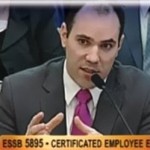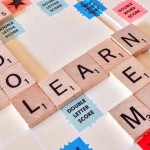Petrified, I hover in aisle 7 waiting for a crowd to leave aisle 8. Aisle 8 may contain my last item on my grocery list, but it also contains 7 other adults — one of whom is wearing a mask like a chin-strap, and two of which allow their nostrils to protrude freely in the communal air.
In my time in aisle 7, staring at my feet, I ponder why people bother with half-measures. The problem, I conclude, is simple: humans behave one way for efficacy and another for compliance.
The Pinocchios and NFL Helmet imitators in aisle 8 are not doing the task to be safe; they are doing it so they can’t get yelled at.
It boils down to a classic letter of the law vs spirit of the law debate. The letter of the law is the path of least resistance. It is minimal effort to avoid admonition or derision. It keeps an individual safe from criticism and penalties. Even if criticized, they can shrug it off or feign a sincere attempt to meet expectation by pointing out oversimplified truths. “I AM WEARING A MASK! YOU DIDN’T SAY HOW!”
I can’t help, as a high school educator, to notice the correlation between this type of approach to school work and our modern predicament that strands me in the wrong aisle delaying my grocery shopping completion.
If I were to make an analogy of ninth graders to mask-wearers in the aisles, I’d say the majority of the students do not bother to cover their nose, many wear it as a chinstrap and several try to sneak past the store security wearing the face mask as if it is a bracelet. There are still many good-faith students who are participating fully with the intention of learning, growing, and developing… but, alas, I would say most do not care (metaphorically) if their mask is being worn effectively.
The pessimistic take in the aforementioned analogy is something many teachers do work hard to combat. Effective teachers can create classroom environments that yield growth and development. What most teachers would tell you is the learning is not inside the assignment — it is inside the activities. Cooperative learning and collaborative activities push children to move beyond compliance. We are often prepared to deal with the reluctant learners, the unmotivated, and the compliance-adhering students; it is what we do.
For instance, if I made a homework assignment with 10 questions, and one question asked students to consider their daily obstacles, I would probably get mostly shallow responses. Students are rushing into compliance to avoid consequences (grade decline, parent nagging, or teacher disappointment). However, if, in the middle of poetry analysis, I put on music and a timer and say, “Everyone draw a rose. The rose is growing out of the obstacles and challenges you face every day. Write down those hardships in the soil and your accomplishments in your petals,” the results will be a rich, diverse, and interesting batch of drawings.
Deliberate instruction that includes time for thought and reflection is more likely to produce deep thought than a robust worksheet or lengthy homework. Most teachers know this, but just like our students, we also know it takes more effort on our planning side to produce these types of activities. Further, we sometimes have to set aside the effective lesson in favor of the mandated test, benchmark, or compliance unit.
Indeed, the more teachers are asked to mark a line based on standards, assessments, and skills, the less we can effectively monitor the spirit of our assignments. Is there a place for skills and standards, yes? But more teachers should be encouraged to plan based on what their current students need rather than what students last year needed, or what we think all students need — as if one size ever fits all.
I wonder, what do our community, school boards, state or nation expect from us? Are we asked to ready our community members to do the minimum, or are we asked to produce sincere and logical young citizens?
What better time than now, in the midst of a seismic shift, to refocus how all teachers prepare their curriculum? It is time all of our districts trust our educators in critical decisions. It is time for districts to fund professional development to create more teachers prepared to cultivate thoughtful and thriving students.
Because I have to tell you, there are many educators who know what needs to be done. They are just stuck on the wrong side of the super market, with an ill-fitting mask, glasses fogging up, trying to do their best right now.
As we reset the paradigm, as we envision a new reality of education, what steps should we take to solidify a more effective mode of teaching? Leave some ideas in the comments below!









